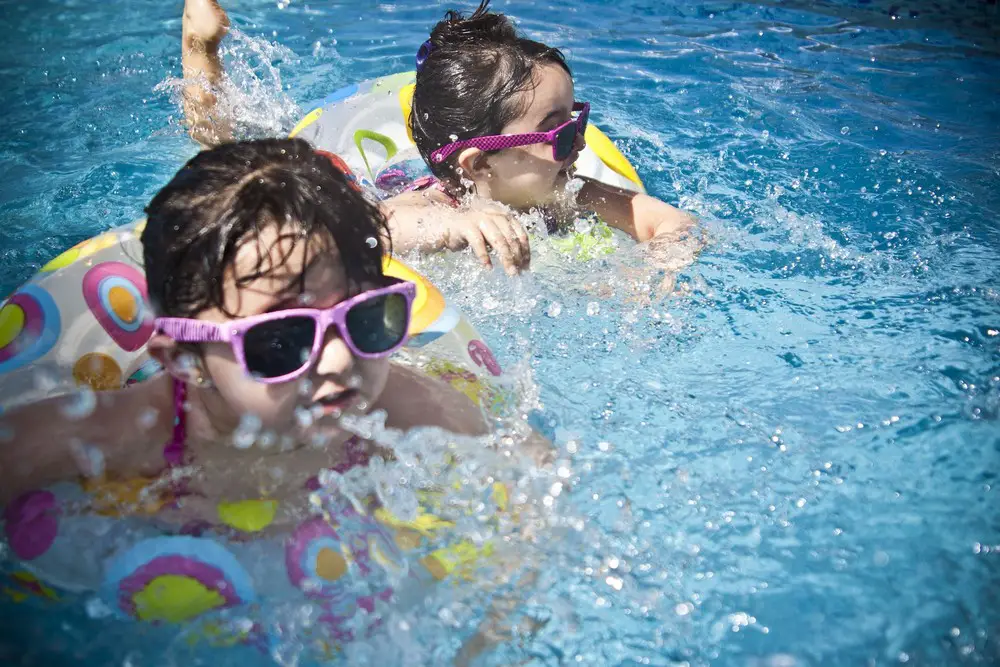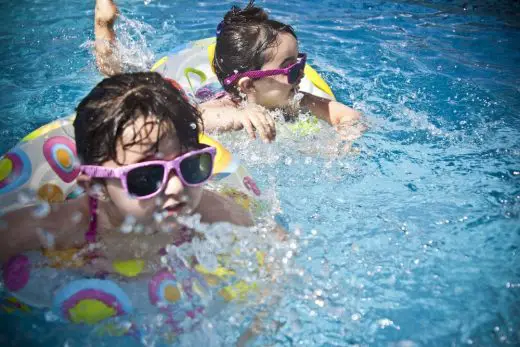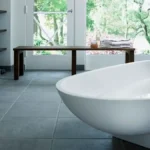Swimming pool water purification, Perfect process design guide, Property water tips, Building advice
Swimming Pool Water Purification Process
April 13, 2023
Unlock the Perfect Water Purification Process
You can have the most beautifully designed pool in the world, but it won’t make any difference if the water is dirty!
When it comes to swimming pools, not all pools are created equal. The most common pool for both private and public use is the chlorine pool, but there are other types of swimming pools that use other purification processes, including saltwater and natural pools.
In this article, we’ll be talking about some of the best pool water purification processes and pool purifiers for each type of swimming pool, as well as the science behind it all.
Here are the best water purification processes and pool purifiers for the most popular types of pools!
Best Pool Water Purification Processes by Type
Chlorine Pools
To fully grasp the process of chlorine’s role in the swimming pool purification process, it’s important to first have an understanding of what chloramine is.
An accumulation of dirt, oil, and other particles in a chlorine swimming pool can cause traces of chloramines to form. These chloramines result from amine salts released from organic substances such as sewage and urine that have reacted with chlorine.
Chloramines irritate eyes and the respiratory tract, so it is imperative for the chlorination and swimming pool purification is done without fail.
While most pools use solid or liquid chlorine for their water purification process, the most effective chlorination process known is infusing chlorine gas. Chlorine gas is released from a gas cylinder into an open pool containing water at about 10 BAR (145 PSI). The chlorine gas reacts with the matter in the water as a pool purifier..
Afterward, water from the pool is drawn into a filtration tank through a filter so that only clean pool water gets purified and returned to the pool.
The filtration tank can be made of strong plastic, such as acrylic or PVC. Acryl has better clarity for observation, but PVC is more resistant to deterioration and less likely to contaminate the water.
The filtration process lasts about five minutes and consists of an air-lift pump that draws in 5-20 cubic meters of water per minute (about 7-30 US/yd3) through a filter with a pore size of 0.2 to 3 microns.
The flow must be just enough so that the water level in the filtration plant does not drop below the top of the filter sections before circulation is turned off. Otherwise, a backwash will occur, and contaminants will flow back into the pool. The swimming pool’s purification process will be ruined.
You can also implement a second purification process as a swimming pool purifier. With this process, the water system must be filled with chlorine gas at 10 BAR (about 145 PSI), and the pump must circulate water from the filtration tank to the pool with a flow rate of 5-20 m3/h (7-30 US/yd3).
This part of the water purification process removes all contaminants from the water.
Ensure that neither too much nor too little chlorine gas is released into the swimming pool during the chemical purification process. If you don’t add enough chlorine, chloramines will not be removed entirely.
Saltwater Pools
Saltwater pools don’t use chlorine tablets or liquid chlorine, but instead generate a pure form of chlorine gas that immediately gets infused into the water to maintain cleanliness in the pool. Saltwater pool owners avoid spending money on chemicals and long hours of hassle because the salt chlorine generator installed on their pool works automatically with the pump to provide just the right amount of chlorination that their pool needs, consistently and reliably.
When the salt chlorine generator is installed, You should add 30 pounds per 1,000 gallons of water, and then periodically check the pool water over the course of the season to maintain this very low level of salinity in the water after rainstorms eventually dilute the pool water. Otherwise, salt does not get used up or evaporate..
Since the salt chlorine generator is working consistently to maintain free chlorine levels in the pool, chloramines don’t form in the water so you don’t get the harsh chemical effects of the traditional chlorine pool. Additionally, as a “backup”, since the water going through the salt chlorine generator is continually being “super-chlorinated” at that point, any chloramines that might form get broken down and eliminated. This is one of the primary reasons that the water purification process provided by saltwater pools creates such high water quality and enjoyable swimming.
Since the chlorination process is largely handled by the salt chlorine generator, the most important aspect of maintaining a saltwater pool on a regular basis is ensuring the salt chlorine generator is set to an appropriate level, balancing the pH level, and ensuring the pool salinity is above the minimum level. After chlorine, pH is the water chemistry level that wants to change the most frequently, and Chlorine can only function effectively when the pH levels are between 7.2 and 7.8, ideally 7.5.
If the levels are not balanced properly, it can affect your saltwater pool and its users. For example, if the salt chlorine generator is set too low, it won’t be able to create enough chlorine to sanitize the pool. If the pH level is not balanced, the chlorine in the water won’t be effective. These types of imbalances can create situations where your pool water gets cloudy or green, or the pool water can start to irritate swimmers’ eyes and skin.
Natural Pools
When it comes to natural pools, the swimming pool purification process differs from pool water purification for traditional chlorine or saltwater pools. Instead of relying on chemicals, natural pools use native microorganisms such as plants, algae, and bacteria to maintain water chemistry balance. The bacteria make the water more acidic, while the plants and algae produce minerals that are needed for a balanced pH level.
While the natural swimming pool purification process may seem ideal, it is essential to note that without proper care, a natural pool could harbor bacteria and parasites that could make a person sick or cause life-threatening conditions. This is why some natural pools use ultraviolet light in their circulation system to counteract this and provide some level of pool water purification. Ultraviolet light can deactivate many microorganisms at the point of contact, preventing them from reproducing.
To ensure the pool is clean and safe for swimmers, regular testing is crucial. A permeable membrane tester or a pool tester recommended by the pool contractor or manufacturer can be used to test the water. The water in a natural pool should be between 75 and 120 degrees for the most efficient use of ultraviolet light. If the water is not within this range, a heater or cooler can be used to adjust the temperature.
If the water is warm, it can accelerate the growth of microorganisms. To prevent this, it is recommended to add chlorine to the pool, but not too much since it can harm the natural ecosystem. The recommended chlorine level is a maximum of 1/5 of a cup per 10,000 gallons. A refractometer or test strips can be used to test the water’s pH level, which should be between 7.5 and 8.0 for good pool health.
If the water is too acidic, adding a calcium pool additive can balance out the levels. While the goal of natural pools is to not require any chemicals, it is still necessary to test the water every two weeks to ensure everything is in good condition. If conditions require it, adding chemicals may be necessary.
Water Purification: A Process for Every Purpose
In summary, different pool types require different water purification processes to keep the water clean and safe for swimmers. Chlorine pools use infusing chlorine gas for the most effective swimming pool purification process, while saltwater pools use a salt chlorine generator. Natural pools, on the other hand, use native microorganisms and ultraviolet light to maintain the water chemistry balance. Regular testing and maintenance are crucial for all pool types to ensure the water is clean and safe for swimming.
Comments on this Swimming Pool Water Purification: Unlock the Perfect Water Purification Process article are welcome.
Swimming Pools
Swimming Pool Design Articles
Swimming Pool Designs
Swimming Pool Building Designs
Important purchases for your new swimming pool
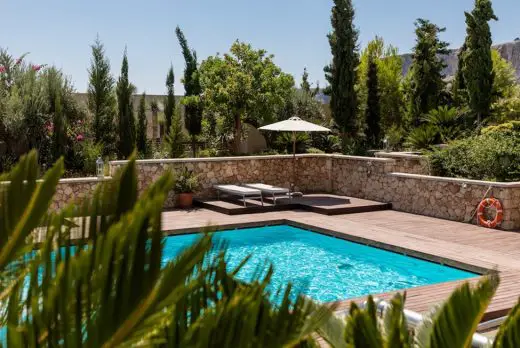
picture : Dim Hou
How to ensure your family swimming pool is child-friendly
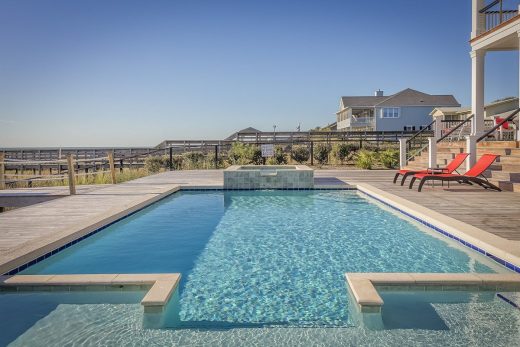
5 Pool Designs That Will Make Your Neighbours Envious
You Should Consider Getting a Swimming Pool
How to clean a green swimming pool effortlessly
7 reasons to have a swimming pool guide
Swimming Pool Architecture Design Ideas
All You Need To Know About Natural Swimming Pools
Property Articles
Comments / photos for the Swimming Pool Water Purification: Unlock the Perfect Water Purification Process page welcome

